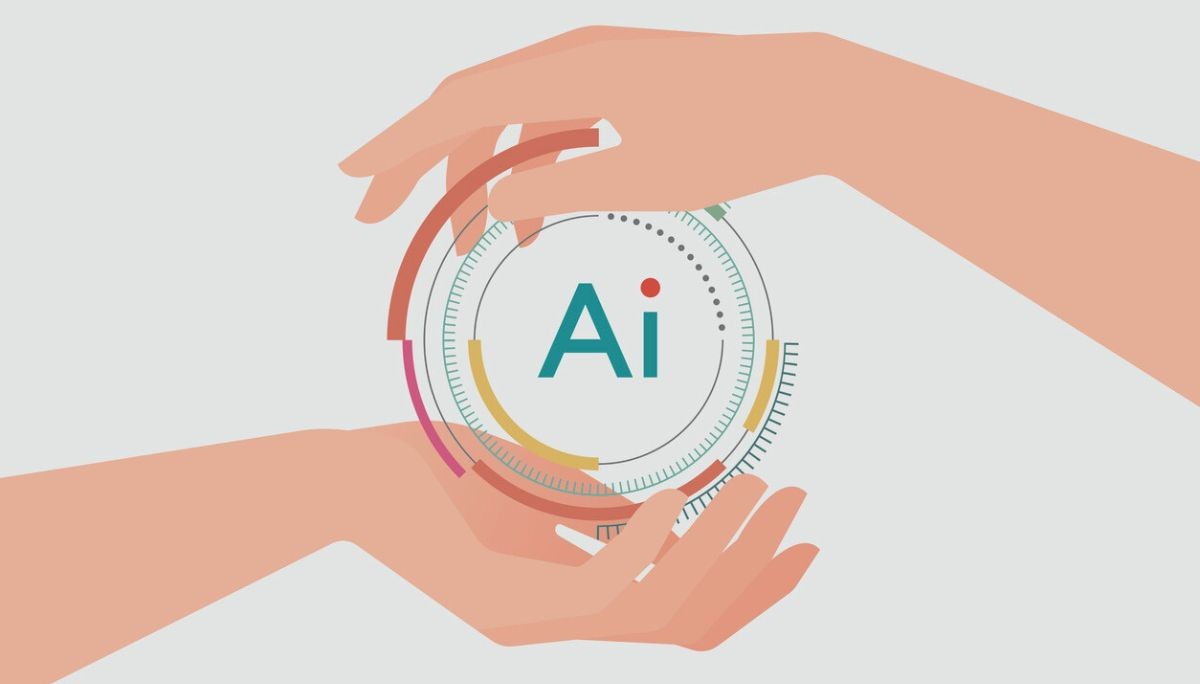The Complete AI Tech Stack: From Models to Deployment
By
Liz Fujiwara
•
Aug 28, 2025
The AI stack serves as the foundation for building and deploying artificial intelligence applications. It is composed of a layered set of tools, frameworks, and components that support every stage of AI development, from data collection and processing to model training, testing, and deployment. Understanding the AI stack is essential for developers, data scientists, and organizations looking to create efficient, scalable, and reliable AI systems. This article explores the key components of an AI stack, their individual roles, and how they work together to enable the development of powerful AI solutions.
Key Takeaways
An AI tech stack is essential for developing and deploying AI applications, consisting of layers that include infrastructure, data management, model development, and deployment.
Key tools and frameworks, including cloud services and specialized MLOps tools, are critical for automating processes, ensuring efficient model management, and enhancing scalability.
Continuous monitoring and seamless integration of AI models with existing systems are vital for maintaining performance, safety, and adaptability in real-world applications.
Understanding the AI Stack

The AI tech stack serves as the foundational base for developing robust AI solutions, much like the base of a skyscraper supports its towering structure. A solid tech stack is crucial for ensuring that AI applications are competitive, efficient, and high-performing. An AI tech stack refers to the collection of technologies and tools used to develop and deploy AI applications, typically including programming languages, frameworks, and cloud services.
At its core, an AI tech stack is a combination of integrated tools, libraries, and solutions tailored for AI development. It encompasses components such as data processing, model development, and deployment infrastructure. These components are organized into layers, each playing a critical role in the development process. From the infrastructure that provides computational resources to the data layer that handles collection and storage, every element must work seamlessly together for optimal functionality.
The importance of a well-structured AI tech stack cannot be overstated, as it directly impacts performance, interoperability, and cost efficiency. A methodical approach to building an AI stack simplifies the development, deployment, and scaling of AI solutions. Organizations must assess their needs, define clear objectives, and align AI projects with overall goals to ensure success.
As interest in AI continues to grow, so does the complexity of tech stacks. Recent surveys indicate that 72% of organizations are implementing AI, reflecting rapidly evolving development trends. This growing adoption highlights the need for a deeper understanding of the key components that constitute an AI tech stack, which we will explore in the subsequent sections.
Key Components of an AI Tech Stack

An AI tech stack comprises multiple tools, frameworks, and platforms, each playing a crucial role in the development process. It is organized into several layers, with each layer designed to handle specific tasks and functions. These layers must work in harmony to ensure the seamless operation of AI systems.
The core components of an AI tech stack can be broadly categorized into four layers:
Infrastructure
Data
Model development
Deployment
Understanding these layers is essential for creating a production-ready AI stack.
Infrastructure Layer
The infrastructure layer forms the backbone of the AI technology stack, providing essential computational resources, storage solutions, and deployment mechanisms. This foundation is crucial for supporting the heavy computational demands of AI applications. Robust compute resources, including CPUs, GPUs, and TPUs, are vital for training and inference tasks, ensuring that models can be developed and executed efficiently.
Scalable storage solutions are a key part of the infrastructure layer. Options such as Amazon S3, Google Cloud Storage, and Azure Blob Storage meet the growing data demands of AI projects and data lakes. These solutions ensure that large volumes of data are stored securely and accessed quickly, facilitating smooth data flow and coordination among components.
High-speed networking is another critical aspect. Efficient data flow and seamless coordination among components depend on robust networking capabilities. Together, these elements create a solid infrastructure that supports the effective operation of AI systems, ensuring both data security and optimal performance.
Data Layer
The data layer is the heart of any AI tech stack, managing the collection, storage, and preparation of data for AI models. Data serves as the raw material for insights and predictions, making efficient data management crucial for AI development. Key stages in data management include:
Data acquisition
Transformation and storage
Processing frameworks
Versioning and lineage
Surveillance mechanisms
Data ingestion tools are essential for collecting and aggregating data from multiple sources. Raw data can come from databases, APIs, sensors, and web scraping. Tools like Amazon S3 and Google Cloud Storage are commonly used for data acquisition, ensuring secure storage and efficient access.
Effective data storage strategies are vital for handling large volumes of structured and unstructured data. Approaches include tiered storage strategies, where frequently accessed data is stored on high-speed media, rigorous data governance practices, and automated tools to manage data at scale.
Data preprocessing involves cleaning, normalizing, and transforming raw data before it is used in AI applications. This step is critical, as data quality and organization directly influence AI model performance. Efficient data management ensures AI systems process data effectively, leading to more accurate and reliable outcomes.
Model Development Layer
The model development layer focuses on designing, training, and fine-tuning AI models to solve specific problems. This layer includes key components such as machine learning algorithms, deep learning frameworks, and libraries that facilitate model creation, testing, and evaluation. The modeling process involves training models with labeled data, selecting appropriate algorithms, optimizing hyperparameters, and ensuring reproducibility.
Choosing the right AI framework is critical for project success. Factors to consider include project requirements, framework features, ease of integration with existing systems, and hands-on experimentation. Popular machine learning frameworks include TensorFlow, PyTorch, and Keras, each offering unique capabilities for model development.
The model development process typically involves several steps:
Model training: Using labeled training data, which often requires substantial computational resources and time.
Hyperparameter optimization: Fine-tuning parameters to enhance model performance.
Reproducibility: Ensuring models perform reliably on new, unseen data.
Effective model development ensures AI systems can handle complex tasks and deliver accurate predictions. By selecting the right frameworks and following a structured development process, organizations can build high-performing AI models tailored to their specific needs.
Deployment Layer
The deployment layer is where AI models transition from development to production, enabling them to operate effectively in real-world environments. The deployment and runtime infrastructure ensures reliable performance and efficiently manages incoming requests. Key components include support for cloud, on-premises, or edge deployments.
MLOps platforms play a crucial role in this layer, automating and managing the entire machine learning lifecycle. These platforms provide features such as experiment tracking, model deployment, and performance monitoring, making them essential for deploying AI solutions. Popular MLOps tools include Kubernetes, Docker, and serverless computing services, each offering unique capabilities for model deployment.
Deployed models are made accessible through APIs or microservices. Strategies such as load balancing, auto-scaling, and resource optimization help manage diverse workloads and ensure high availability and scalability. Clusters further enhance reliability and allow large-scale AI applications to perform efficiently.
Effective AI deployment ensures that models operate reliably and efficiently in production environments. By leveraging the right tools and strategies, organizations can deploy AI solutions that meet both performance and scalability requirements.
Specialized Tools for AI Development

Specialized tools play a pivotal role in accelerating AI development by reducing technical barriers and streamlining processes. Automated ML (AutoML) tools, for instance, provide off-the-shelf solutions for model selection and hyperparameter tuning, making it easier for non-experts to build machine learning models. Google AutoML is a prime example, allowing users to create models without extensive coding expertise.
Key MLOps tools include:
MLFlow: Manages the machine learning lifecycle from experimentation to deployment.
Kubeflow: Simplifies the deployment, orchestration, and scaling of machine learning workflows on Kubernetes, making it invaluable for AI tech stack building.
Open-source MLOps tools: Often favored for their cost-effectiveness and flexibility.
Cloud-based services offer comprehensive capabilities for building, training, and deploying machine learning models at scale:
Amazon SageMaker
Databricks Machine Learning, which combines data engineering, machine learning, and analytics, providing a unified platform for AI development
These tools are essential for creating a modern AI tech stack that is both efficient and scalable. Choosing the right tools and platforms is critical for establishing a successful AI tech stack. Specialized tools help organizations accelerate innovation, reduce development time, and deploy AI solutions tailored to their needs. They empower data scientists and software engineers to develop high-quality AI models, ensuring successful AI projects.
The Role of Large Language Models (LLMs)
Large language models (LLMs) have revolutionized modern AI applications by providing advanced natural language processing capabilities. Trained on vast datasets, an LLM can perform multiple tasks, including content generation, language translation, and conversational AI. Their ability to infer context and generate relevant text makes them suitable for diverse language tasks, enhancing user interactions and experiences.
LLMs excel in conversational AI, providing contextually aware responses that significantly improve the effectiveness of services like chatbots. With billions of parameters, these deep learning models can understand and generate human-like text, making them invaluable for applications that require natural language processing.
The impact of LLMs on AI applications is profound. They enable the automation of complex tasks, streamline processes, and improve customer experiences through advanced language capabilities. As LLMs continue to evolve, their role in AI tech stacks will become increasingly significant, driving innovation and enhancing the capabilities of AI systems.
Monitoring and Managing AI Systems

Post-deployment monitoring of AI systems is essential to ensure public safety and build trust in AI technologies. Continuous monitoring helps:
Identify risks and prevent critical malfunctions that could adversely impact users.
Detects unforeseen behaviors when AI systems are deployed in new contexts.
Conduct ongoing evaluations to ensure reliability and performance.
Implementing standardized post-deployment monitoring processes can enhance understanding of AI impacts and promote safety. Regulatory frameworks, similar to those used for pharmaceuticals and transport safety, are necessary for effective monitoring of AI systems. These frameworks ensure that AI applications adhere to safety standards and operate as intended.
Continuous model monitoring is crucial for detecting deviations from expected behavior or performance degradation. Popular tools for monitoring AI models include:
Each tool offers unique capabilities for tracking model performance and identifying issues. By leveraging these tools, organizations can ensure that their AI solutions remain reliable and effective over time.
Effective monitoring and management of AI systems are critical for maintaining optimal performance and ensuring the safety and trustworthiness of AI applications. Continuous evaluation and adherence to regulatory standards are essential for the successful deployment of AI solutions.
Seamless Integration with Existing Systems
Seamless integration of AI models with existing systems is crucial for achieving optimal performance and efficient data management. Assessing current IT infrastructure is the first step in identifying integration opportunities and potential compatibility challenges. This assessment helps organizations understand the technical requirements and anticipate hurdles in implementing AI solutions.
Utilizing robust APIs and microservices facilitates smoother integration of AI models into pre-existing systems. These technologies enable effective communication between components, ensuring that AI models operate efficiently within the existing infrastructure. APIs and microservices also enhance flexibility and scalability, making it easier to adapt AI solutions to evolving business needs.
Technical expertise is often necessary for successful AI integration, as organizations may lack the required knowledge internally. Collaborating with experienced professionals or leveraging specialized tools can help overcome technical challenges and ensure smooth deployment. Focusing on seamless integration maximizes the benefits of AI investments and ensures optimal system performance.
Case Studies: Successful AI Implementations

Real-world case studies provide valuable insights into the transformative power of AI across various industries. In e-commerce, AI has led to a 30% reduction in order processing times and a 20% increase in customer satisfaction. By leveraging predictive analytics and machine learning models, companies can optimize operations and enhance customer experiences.
In the retail sector, a major chain successfully implemented an AI strategy to address a 15% decline in sales through improved inventory management. By utilizing AI for demand forecasting and stock optimization, the retailer streamlined operations and boosted sales. Similarly, a luxury automotive firm employed AI for route optimization and predictive maintenance, significantly enhancing fleet management efficiency.
Another compelling example comes from the agritech industry, where an AI-driven precision farming solution optimized crop yields and reduced operational costs. By analyzing data from sensors and satellites, the AI system provided actionable insights for improved decision-making and resource allocation.
In education, an online platform used AI to personalize learning experiences, resulting in higher user engagement and satisfaction. These case studies demonstrate the diverse applications and tangible benefits of AI across industries.
By deploying AI solutions, organizations can tackle complex tasks, improve efficiency, and achieve substantial business outcomes. These success stories highlight the potential of AI to drive innovation, growth, and competitive advantage.
Fonzi’s Unique Approach to AI Talent
Finding the right talent is crucial for the success of any AI project, and Fonzi offers a unique approach to AI recruitment through its Match Day events. These events connect companies with pre-vetted AI engineers, streamlining the hiring process and ensuring a high-quality talent pool. Fonzi accelerates hiring by enabling companies to present job offers to candidates within a 48-hour timeframe.
Fonzi’s platform includes:
Bias-audited evaluations, ensuring fair assessments of candidates and promoting diversity in hiring.
Advanced fraud detection mechanisms to secure the recruitment process for both candidates and employers.
Talent engagement and optimal matches, preserving and enhancing the candidate experience to fine-tune the hiring process.
The service supports both startups and large enterprises, accommodating hiring needs from the first AI hire to the 10,000th. Fonzi’s curated marketplace exclusively features high-intent candidates who are thoroughly vetted to meet business requirements. This approach not only accelerates the hiring process but also ensures that companies find the best fit for their AI projects.
Fonzi’s innovative recruitment model delivers high-signal, structured evaluations, making it a valuable resource for organizations looking to build or expand their AI teams. By leveraging Fonzi’s expertise, companies can navigate the competitive AI talent market and secure top-tier engineers for their projects.
Summary
Building a comprehensive AI tech stack is essential for effectively developing, deploying, and scaling AI solutions. From understanding the core components of an AI stack to leveraging specialized tools and ensuring seamless integration with existing systems, every step plays a critical role in the AI development process. The layers of the AI tech stack, including infrastructure, data, model development, and deployment, must work together seamlessly to achieve optimal performance.
The role of large language models and the importance of monitoring and managing AI systems cannot be overstated. These elements not only enhance the capabilities of AI applications but also ensure their reliability and safety in real-world environments. Case studies across various industries highlight the transformative impact of AI and demonstrate its potential for innovation and growth.
Fonzi’s unique approach to AI talent acquisition provides a competitive edge for organizations looking to build or expand their AI teams. By connecting companies with pre-vetted AI engineers through structured hiring events, Fonzi enables businesses to quickly and efficiently secure the talent they need. As the AI landscape continues to evolve, a well-structured tech stack combined with the right talent will be key to staying ahead of the curve.




